Newsletters & Notes
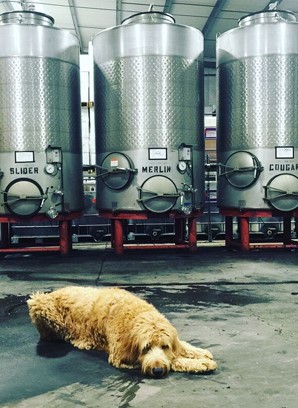
February Tribe Newsletter: Tasting Notes and More!
Hi there, Tribe members! Your Tribe shipments are on their way, and we know you’re looking for the Meeker February Tribe Newsletter. Click the link to read tasting notes, Lucas’s stories about how these wines were made, and much more.
Meeker Wins 8 (Count ‘Em Eight!) Medals at the San Francisco Chronicle Wine Competition
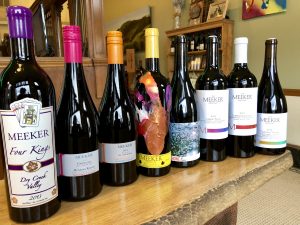 We are thrilled to announce that our wines won eight medals at the 2018 San Francisco Chronicle Wine Competition. We are incredibly proud not only to be recognized—but to have the breadth and variety of our wines recognized.
We are thrilled to announce that our wines won eight medals at the 2018 San Francisco Chronicle Wine Competition. We are incredibly proud not only to be recognized—but to have the breadth and variety of our wines recognized.
We love making all kinds of wines, creating new, innovative blends, and adding our spin to classic varietals. It’s wonderful that folks are enjoying and appreciating what we do.
Here’s the rundown on our medal haul:
Gold
2013 Four Kings Bordeaux Blend, Dry Creek Valley $62
2014 Hoskins Ranch Vineyard Grenache, Dry Creek Valley $38
2014 Syrah, Dry Creek Valley $40
Silver
2014 Cabernet Franc, Dry Creek Valley $45
2015 Hone #1 Sakura Blend, Dry Creek Valley $42
2013 Cabernet Sauvignon, Dry Creek Valley $48
2014 Winemaker’s Handprint Merlot, Sonoma County $45
Bronze
2014 “The Paddle” Blend, Dry Creek Valley $42
Interested in trying one or all of these wines? Stop by the tasting room, buy them online, or give us a call if you have questions.
A Fall 2017 Harvest Report
 In our last newsletter I wrote about the adventure and magic that we enjoy as winemakers. I also briefly described it as a privilege. I used that word because it implies a sense of honor—an opportunity so good that it demands excellence—but also a sense of luck—appreciating the opportunity and feeling gratitude for having it. Now, between Thanksgiving and the New Year and after the rush of harvest and the devastating wildfires that ripped across our community 60 days ago, I appreciate the privilege to make wine in Sonoma County more than ever.
In our last newsletter I wrote about the adventure and magic that we enjoy as winemakers. I also briefly described it as a privilege. I used that word because it implies a sense of honor—an opportunity so good that it demands excellence—but also a sense of luck—appreciating the opportunity and feeling gratitude for having it. Now, between Thanksgiving and the New Year and after the rush of harvest and the devastating wildfires that ripped across our community 60 days ago, I appreciate the privilege to make wine in Sonoma County more than ever.
We were lucky. Everyone we know is safe. None of our family or employees or my closest friends lost their homes. We sustained no damage to the tasting room or winery. My wife and I hosted families and pets who evacuated to our house in Petaluma and eventually all returned to their homes. But from the morning after the fires started and for the next 10 days at least, every conversation started with “Are you okay? Is your family safe? Did everyone in your circle come out okay?” Far too many people I know were not as lucky as we were. Many of my friends or their parents lost their homes.
One friend woke to fire so close that she didn’t even grab her wedding ring off of her nightstand—she and her husband grabbed their kids and dog and ran out the door. Luckily they were safe.
Many of our customers were affected. One Tribe member reached out to us, sharing that he lost his house and his cellar including Meeker wines going back to the 1995 vintage (we were grateful to help him replace some of his favorites).
The fires left behind many more stories like these. For many folks here in wine country, things will never be the same. But as I drive through the burn scar in my daily commute, now that we’ve had a few rains, the hills are slowly turning from black and brown to green as new grass grows through the char.
It’s hard to talk about something positive in the context of such tragedy, but the immediate outpouring of support and care and love—both locally and from afar—left me awestruck, impressed, and proud. We continue to do our best to contribute to the recovery effort, and we thank and appreciate those of you that have helped as well. More help will be needed, and if you’d like advice on where to direct your contributions, Kelly wrote a blog post on our website that details the best ways to donate.
On to a lighter subject: I’m happy to report that regardless of the fires, this year’s wines look to be off to a strong start. It’s always hard to summarize the characteristics of a vintage when we make so many different wines, but on balance our 2017 wines benefited from longer hang time to the tune of 10-15 days and substantially more consistent ripeness across vineyard blocks. Yields were either about average or down 10-30%, depending on the vineyard. Quality overall was above average, with some stellar picks mixed in, particularly from Dry Creek.
There were some interesting quirks to the vintage as well (and as always): We had a few instances of weather that led to extended pauses in ripening—one brief rain and cool phase saw some vineyards drop 1-2 degrees Brix. In most years over the past decade we’re usually dealing with fruit that has plenty of sugar but lacking phenolic ripeness and physical berry maturity. This year, especially with Cab and Merlot, we found ourselves happy with phenolic ripeness and acidity on a couple occasions but waiting on sugar. A nice change of pace, to be honest, because ripening patterns like this play to the favor of our winemaking style.
Turning to this shipment, we’re sending you a nice pairing of something old and something new. The “old” would be the library vintage of Four Kings. Normally this shipment would feature a 2014 Four Kings blend. Unfortunately, we didn’t have the wines (all four “Kings”) from the 2014 vintage to assemble a Four Kings blend from this vintage. Instead of skipping Four Kings in your shipment (which we feared might lead to a small Tribal uprising), we are sending you one from the library. We want to be sure to let you know that we sent this at the normal Four Kings retail price (before your discount), as opposed to the Library price. As you’ve probably heard before, one of our main winemaking goals is to build wines that age well and continue to evolve for 10-20 years. We also know that the majority of wine drinkers don’t wait that long (you’re thirsty, I get it). So, when we have an opportunity to send you a wine from the library, especially a perennial favorite like Four Kings, we take it: it lets us show off how beautifully our wines age.
The something “new” in this shipment is the new packaging on the 2015 Grenache. This is the same Grenache release you’ve gotten used to in your November shipment, but the first time you’ve seen the updated version of what we refer to as the “M-Bar” packaging. The M-Bar package concept hadn’t been updated since I first designed it in 2009 (or somewhere around there), and it had fallen out of line with the packaging on our other wines. After a few attempts over the past year, we finally came to a consensus on this new look. It blends elements of the old M-Bar concept and colors with the spartan spacing and lettering of our more recent labels (the Cab Franc, Paddle, Pinot Noir, DCV Cab Sauv label group which we call the “New-Old” labels (admittedly, our in-house naming of these things could use some polish)). I’m happy with it, but I’d love to hear feedback from all of you as well.
As we move into the holiday season and prepare for the new year (and our 41st year in the Sonoma County wine business), I’d like to thank you for continuing to support our family business and the employees, growers, vendors, and community that make it possible. We are fortunate and grateful to be part of the ongoing adventure of making wine and we are blessed to have you along for the ride. From all of us—Molly, Charlie, Kelly, Ricardo, Jeff, Janelle, Kat, our families, and me—we wish you and yours a bright and merry holiday season as well as our highest hopes for a happy, healthy, and prosperous 2018.
Notes From El Jefe: How the Fires Are Impacting Wine Country
The terrible fir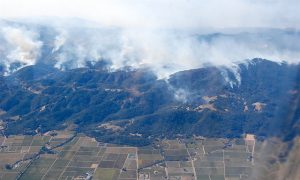 es that burned in Sonoma, Napa and Mendocino counties this past October were a great tragedy. In Sonoma County alone, the wildfires destroyed 6,600 structures, including 5,130 homes, and killed at least 23 people, according to data released by Cal Fire in early November. Our hearts go out to all the people who suffered losses from these wine country fires, as well as to the people in Southern California who are suffering from out-of-control wildfires as I write this.
es that burned in Sonoma, Napa and Mendocino counties this past October were a great tragedy. In Sonoma County alone, the wildfires destroyed 6,600 structures, including 5,130 homes, and killed at least 23 people, according to data released by Cal Fire in early November. Our hearts go out to all the people who suffered losses from these wine country fires, as well as to the people in Southern California who are suffering from out-of-control wildfires as I write this.
I want to report to our Tribe, however, that our winery and tasting room escaped fire damage, as did Molly’s and my home, as well as Lucas’ and Erika’s home. Our tasting room in Geyserville was in a recommended evacuation zone, and we closed it for a week, but since then it’s been back on a normal operating schedule. I also want to report that Austin and Remy (Molly’s and my dogs) and Ennis (Erika’s and Lucas’ dog) are as happy and fun as ever.
During the fires there was a great deal of speculation about the possibility of smoke tainting the grapes. So far as we know, however, this did not develop into a significant problem. Virtually all of our wine grapes had been harvested before the fires, and the very small amount of grapes harvested after the fires did not suffer from smoke taint.
I can also report positive news that, in general, the Sonoma, Napa and Mendocino wine industries did not suffer significant physical damage from the fires. There are more than 1,000 wineries operating in these three counties. To my knowledge, only eleven of those wineries were destroyed by the fires, and an even smaller number of wineries suffered some fire damage, but are still able to operate.
And while the fires did burn around the edges of some vineyards, they did not generally attack entire vineyards. Indeed, in a number of instances, vineyards served as fire breaks. Most of the vineyards are as glorious to view as ever.
There has, however, been an intangible negative effect from the fires. Since the fires, the number of wine lovers traveling to visit our wineries and tasting rooms (as well as our local hotels, restaurants, etc.) is significantly reduced. We ask, therefore, that you help us spread the word that, while the October fires were devastating in many ways, they did not have a major negative effect on our North Coast wine industry. The great majority of our wineries, restaurants, hotels, etc. are operating in a perfectly normal manner. Please come visit!
All of us at The Meeker Vineyard wish you and yours Happy Holidays and a wonderful New Year!
Image credit:
How You Can Help Northern California Fire Victims
We’ve received many lovely calls and notes from folks concerned about our family and team. So far, we are safe and not in immediate danger.
We are lucky. Many families and businesses in Northern California have lost everything. We’re hosting friends who may have lost their homes, and we’re waiting and worrying for many more. We invite you to join us in donating what resources you have to share. We’ve compiled a list of opportunities and we’ll keep updating this.
Donations
- The Redwood Empire Food Bank is eagerly accepting donations of food and money. Find out what they need and support their great work here.
- The Redwood Credit Union has opened a fund for fire relief. Donate here.
- Napa County Community Foundation has started a fund for fire relief. Details here.
- The Community Foundation of Mendocino County has started a disaster fund. Info here.
- The Graton Day Labor Center has started a fund to help immigrants in our community. Give here.
- The Sonoma Humane Society has an Amazon wish list where you can help purchase supplies for them to care for animals separated from their owners. Buy stuff here.
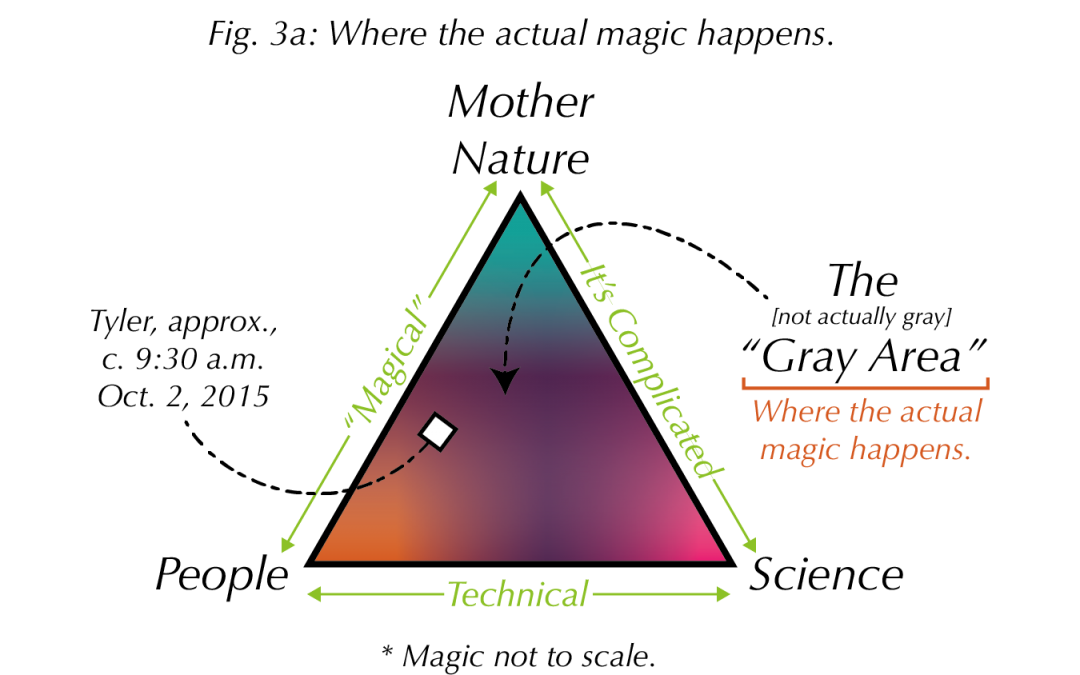
All About Sakura
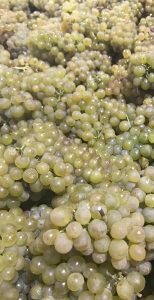 It’s fitting that I’m writing you this newsletter during this time of year, at the table I invade as my “Harvest Desk” from roughly late August until early November. That’s because this shipment brings you a new wine, the first in a new series, that embodies the magic and madness of harvest. While I am incredibly proud of this vintage of Winemakers’ Handprint Merlot, I want to take this space to tell you more about Hone #1: Sakura. I’m excited about this wine for wine reasons, so to speak, but I’m also excited about this wine because it tells three stories that mean a lot to me: it lets me share a little about where I find the magic in winemakin; it represents a multi-decade tradition in our cellar established by my dad; and it tells you about our former Asst. Winemaker/my current brother-in-law Tyler Johnson.
It’s fitting that I’m writing you this newsletter during this time of year, at the table I invade as my “Harvest Desk” from roughly late August until early November. That’s because this shipment brings you a new wine, the first in a new series, that embodies the magic and madness of harvest. While I am incredibly proud of this vintage of Winemakers’ Handprint Merlot, I want to take this space to tell you more about Hone #1: Sakura. I’m excited about this wine for wine reasons, so to speak, but I’m also excited about this wine because it tells three stories that mean a lot to me: it lets me share a little about where I find the magic in winemakin; it represents a multi-decade tradition in our cellar established by my dad; and it tells you about our former Asst. Winemaker/my current brother-in-law Tyler Johnson.
I’m [in]famous for talking about wine technically and focusing on “science-y stuff”. That’s true, and often folks presume my opinion is that winemaking is all science and all technical, and that I don’t feel or find much magic in the process. And while I do love the technical side of winemaking, there is ample magic to be found. It might be counter-intuitive, but you can walk in to a winemaking decision armed to the teeth with information and all it does is make the decision more difficult. And more often than you’d think, what drives a decision is gut instinct.
To me, winemaking is about relationships. We have a relationship with Mother Nature that feels instinctive, magical, and mysterious. We also have a relationship with science that feels structured, confident, and logical. And we force a relationship between the two, where we use science to try and “unlock” the mystery of winemaking, and where we use the data from Mother Nature’s fruit to arm science with the tools to teach us more and help us make better wine.
These relationships form a triangle, and our corner, humans, includes all the wrinkles and mess we bring to the table: logistical messes, tradition, artistry, history, ethics, etc. When the relationships—the lines, if you will—between the three points of the triangle are strong, good wine gets made. But the lines aren’t where the wine is made. The space inside the lines—which I usually call the “gray area” (but I secretly imagine it isn’t literally gray at all)—is where winemaking happens. And that space, where Mother Nature, science, and humans push and pull on each other endlessly, is full of magic. Rolling up our sleeves to dive in every August is a privilege, an adventure, and a lot of fun.
Sakura is a perfect specimen of a wine that could only exist because of the magic of the “gray area”, which makes it a perfect choice as the first wine in our new series, Hone. My dad, long before I was making wine, established a tradition of curiosity and a drive to learn and improve that is the foundation for our winemaking ethos.
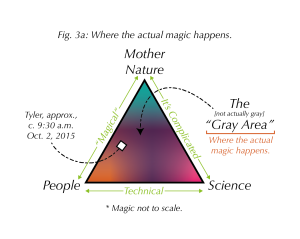 One way he did this was by constantly “experimenting”, by which he meant constantly trying to refine our process by finding new grapes, techniques, or winemaking adventures to explore. He insisted on at least one “experiment” every harvest (and usually ended up with a few). These experiments either became or inspired many of our wines: Four Kings, FroZin, Barberian, Zin Gre, Paddle, Fossil and many others all come from this lineage of experiments. And many of the techniques and protocols we use on every wine were refined—or honed [sorry, couldn’t resist]—in this tradition. Always experimenting, always learning, always wondering is a tradition I’m very proud to continue, and it will always represent the values that underpin my relationship with my dad.
One way he did this was by constantly “experimenting”, by which he meant constantly trying to refine our process by finding new grapes, techniques, or winemaking adventures to explore. He insisted on at least one “experiment” every harvest (and usually ended up with a few). These experiments either became or inspired many of our wines: Four Kings, FroZin, Barberian, Zin Gre, Paddle, Fossil and many others all come from this lineage of experiments. And many of the techniques and protocols we use on every wine were refined—or honed [sorry, couldn’t resist]—in this tradition. Always experimenting, always learning, always wondering is a tradition I’m very proud to continue, and it will always represent the values that underpin my relationship with my dad.
Sakura is the result of a perfect “gray area” magic moment where my dad’s tradition collided with Mother Nature’s short yields, our shortage of fermentation space, and Tyler’s personality and iron-will. Tyler’s idea to co-ferment the short Viognier with our field blend (more on that below and on the back label) was pretty out-there, I never would have come up with it, and I’m pretty notorious for out-there ideas. But if you know Tyler well, the fact that he came up with this idea fits perfectly.
Ty spent five harvests with us, first as a cellar assistant in 2011 and finishing as Assistant Winemaker and Ops Manager after the 2015 harvest. I was friends with Ty for years before he worked in the cellar, so having him in the winery was a lot of, and occasionally too much, fun. You can even see it in our Harvest Records: Tyler’s records are at least 40% more diligently kept than mine, and you don’t go more than a couple pages of winemaking data without finding some of Tyler’s personality. It’s hard to explain how a binder full of data and To Do lists can be funny, but Tyler made it so.
Ty is also curious, pragmatic to his core, and fearless. If he thinks something is right, good luck changing his mind. Sakura wouldn’t exist if it wasn’t for his idea to combine the two lots: he had a gut-feeling that this was an experiment we should try, and he had to convince me. This should tell you a lot about how big of a part of our family, and our tradition, he is. I didn’t do anything special other than say “that’s a weird idea, <bleep> it, why not?” and then convince my dad (it didn’t take much, he loves experiments). This should also tell you a lot about my relationship with Tyler (an in-law!). He was a big, positive force in our cellar, and our wines are better for having had him around as long as we did.
I’m so excited to bring you this first wine in the Hone series alongside another incredible vintage of Handprint. It is a perfect pairing of two contrasting traditions: our first tradition of making classically structured, elegant, age-worthy wines and our second tradition of “experiments” that never stops teaching us how to refine our execution of the first tradition.
As always, our door is open to you when you’re in town, and I’m always available by email (lucas@meekerwine.com) to answer any questions or help out however I can. Thank you for your support.
September 2017: Notes from El Jefe
The release in this Tribe shipment of a Meeker wine named “HONE #1: Sakura” has inspired me to share with our Tribe the great pride and pleasure and, indeed, the great excitement that Molly and I have experienced as Lucas has fully matured into an expert and innovative head winemaker over his 10+ years with our winery.
As Lucas explains on the back label of Hone #1: Sakura, it has been a longstanding tradition at our winery that “every harvest we have at least one ‘experiment’ – a variety we haven’t made, a technique we want to sharpen, or a winemaking idea we haven’t tried before – to reinforce the idea that we’re never done honing our craft.” In that tradition, our Hone #1: Sakura is a new wine blend created by Lucas with the help of Tyler Johnson, who was then our assistant winemaker — and who now is our daughter’s husband! To my knowledge, this wine is not based on any previously established wine blend.
Hone #1: Sakura is a co-fermented blend of 27.5% Viognier, 18.3% Carignane,18.3% Zinfandel, 18.3% Petite Sirah, and 17.6% Grenache. Due to the Viognier (a white grape), the wine is medium bodied and medium red in color. It features a wonderful floral aroma and a juicy taste. Although I have not yet done so, I look forward to experimenting by drinking this wine chilled. In any event, this wine is something quite
new, and I believe that you will like it a lot.
Lucas is, of course, continuing to do a great job making our traditional Meeker “big reds”, such as the 2014 Handprint Merlot that is also part of this Tribe shipment.
Enjoy!
Celebrating our 40th Anniversary with a Library Tasting + Sale
 The Meeker Vineyard is coming up on our 40th anniversary, and to celebrate, we’ll be pouring wines from four different decades at our first ever Library Tasting event. Here are the details:
The Meeker Vineyard is coming up on our 40th anniversary, and to celebrate, we’ll be pouring wines from four different decades at our first ever Library Tasting event. Here are the details:
Meeker Library Tasting
Saturday, August 19, 1-5 pm
Try and buy 80’s Zinfandel (not for sale, unfortunately), 90’s Cabernet, Merlot, and Four Kings, 2000’s Carignane and Barberian, and some current release wines from the 2010’s, like ZinGre, Grenache, Zinfandel, Winemaker’s Handprint Merlot, and Four Kings.
RSVP to the tasting room at tastingroom@meekerwine.com or 707-431-2148 if you’d like to attend.
Here’s what we’ll have for tasting and for sale:
The 1980s
1988 Meeker Cabernet Sauvignon – Estate, $70
The 1990s
1995 Meeker Winemaker’s Handprint Merlot, $60
1995 Meeker Gold Leaf Cuvée Cabernet Sauvignon, $60
1995 Meeker Four Kings Bordeaux-Style Blend, $80
1996 Meeker Gold Leaf Cuvée Zinfandel, $45
1997 Meeker Gold Leaf Cuvée Cabernet Sauvignon, $60
The 2000s
2001 Meeker Four Kings Bordeaux-Style Blend, $80
2001 Idle Home Ranch Russian River Valley Zinfandel – 1.5L, $90
2001 Meeker Bartolomei Vineyard Carignane, $50
2002 Meeker Forchini Vineyard Dry Creek Valley Carignane, $50
2002 Meeker Barberian, $40
2003 Tutu Luna Dessert Wine, $28
2005 Meeker Four Kings Bordeaux-Style Blend, $80
2005 Meeker Winemaker’s Handprint Merlot, $60
2007 Lucas J Cellars Sauvignon Blanc, $40
2007 Lucas J Cellars Jasper Vineyard Russian River Valley Pinot Noir, $50
2007 Lucas J Cellars “Archaic”, $40
The 2010s
2010 Meeker Barberian, $40
2011 Meeker Barrel Select Zinfandel, $38
2013 Meeker Dry Creek Valley Cabernet Sauvignon, $48
2013 Meeker Four Kings Bordeaux-Style Blend, $62
2013 Winemaker’s Handprint Merlot, $45
2014 Meeker Chardonnay, $28
Press Release: Meeker Vineyard Celebrates 40 Years in Sonoma County
The Meeker Vineyard is celebrating 40 years in Sonoma County’s Dry Creek Valley, and to celebrate, we’ll be pouring wines from four different decades at our Library Tasting event next month. Second generation winemaker and COO, Lucas Meeker, invites you to share in our historical tasting event.
Meeker Vineyard Library Tasting
Saturday, August 19, 1:00pm – 5:00pm – Media, Trade, and Wine Club members
Location: 5 Fitch Street, Suite B; Healdsburg, CA 95448
- 1980s- Zinfandel and Cabernet Sauvignon
- 1990s- Cabernet, Merlot and Meeker’s Four Kings Red Blend
- 2000s- Carignane and Barberian
- 2010s- Grenache, Merlot, Cabernet Franc, and Four Kings Red Blend
Please RSVP for this tasting by emailing jeff@meekerwine.com, or calling the tasting room at 707-431-2148.
About The Meeker Vineyard:
The Meeker family takes pride in an unconventional attitude towards wine. As the matriarch, Molly, would love to tell you with a smile, “we take nothing seriously but the wine itself.”
Charles and Molly Meeker bought their first vineyard at the end of West Dry Creek Road in Sonoma County’s Dry Creek Valley in 1977. The man responsible for inviting Charlie to visit the area for the first time was Jerry Lambert of Lambert Bridge Winery. Jerry later introduced Charlie to a local real estate broker/winemaker, Americo Rafanelli, aka A. Rafanelli, who helped negotiate the purchase of a 98-acre farm. It included five acres of old vine zinfandel, a prune orchard, and some additional vineyard that had been abandoned during prohibition. This property would become The Meeker Vineyard in early 1977. In 1984, Charlie and Molly established their winery on the vineyard site with Charlie as the winemaker. In its early years, the winery specialized in Zinfandel, Cabernet Sauvignon, and Chardonnay.
The winery’s first red wine release, a 1984 Zinfandel, was an instant success, winning eight wine competition medals and becoming the third most awarded Zin in the country that year. Thereafter, among other awards, the 1985 Meeker Zin was a Wine Spectator “Best Buy”, the 1986 Zin was a “Spectator Selection”, and the 1990 Zin was included among the Wine Spectator’s “100 Best Wines of the World”. And Zinfandel wasn’t the winery’s only success – for example, the Wine Spectator gave a score of 91 to one of Charlie’s early Chardonnays.
Today the Meeker Vineyard continues to operate as a family operation. Second generation winemaker, Lucas Meeker, the youngest of Molly & Charlie’s children, joined the winery full time in 2007 after graduating from Colgate University. Starting off scrubbing tanks and washing glasses, he’s worked his way up to COO and Head Winemaker. He also does all of the label design and runs the winery day-to-day. Molly is President and in charge of marketing and accounting. Charlie is CEO and Co-Winemaker, and a fixture in our Geyserville tasting room (21035 Geyserville Ave), where he is known for sharing stories about his experiences in the wine business and his career as a Hollywood lawyer and executive.
A Tribute To Frank McGinnis
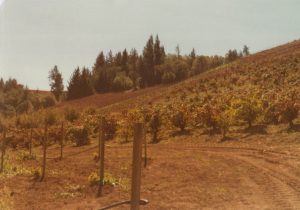 I would like to tell you about a very special man who served as our vineyard manager for many years, and who also, with no prior winemaking experience, served as a very effective Assistant Winemaker when we established our winery in 1984. I think you’ll enjoy the story. But first, some background info.
I would like to tell you about a very special man who served as our vineyard manager for many years, and who also, with no prior winemaking experience, served as a very effective Assistant Winemaker when we established our winery in 1984. I think you’ll enjoy the story. But first, some background info.
As many of you know, Molly and I bought our first vineyard during February 1977. It was on West Dry Creek Road in Sonoma County, and the real estate broker who handled the transaction was Americo (“Am”) Rafanelli. Am was also then the owner/winemaker of A. Rafanelli Winery in Dry Creek Valley. Am and his wife Mary became our good friends for many years thereafter. They were wonderful people.
At Am’s suggestion, we hired Jim Guadagni as our first vineyard manager. At that point Jim was in his 60’s and had spent his life living and farming in Dry Creek Valley. Part of our new vineyard was steep hillside with an elevation gain of 380 feet just within our property, and we planted most of that hillside in the years following our purchase. One of my favorite memories of Jim was watching him drive our track-layer tractor pulling a big disc across that hillside. Even though he was driving the tractor across the hillside, it was so steep that, in order to keep the tractor from sliding downhill, Jim had to point the tractor as much uphill as across. Jim may have been in his 60’s, but doing that scary kind of tractor driving didn’t seem to bother him at all.
About a year into Jim’s work with us, he introduced me to Frank McGinnis, his son-in-law, who had recently settled in Dry Creek Valley. Jim explained that Frank had recently retired from many, many years of service in the U.S. Navy, where during the Vietnam War he had served as a Chief Bosun’s Mate on a U.S. aircraft carrier off Vietnam, with hundreds of sailors reporting to him. And, of course, Jim soon thereafter suggested that I hire Frank to help him manage our vineyard. Frank started working with us right away, and after Jim’s retirement became our sole vineyard manager.
Frank was very likeable, quite smart, good at listening to instructions, and always ready with intelligent questions. He worked well with other people, and I never knew him to exchange unpleasant words with any of our vineyard employees or other workers. Above all, he was a man who enjoyed doing hard and successful work.
We built our first winery during the summer of 1984, and even though Molly and I lived and had full time jobs in Los Angeles, I also served as the winery’s only Winemaker until 1991, when an exciting new job in Los Angeles (I became President of Metro-Goldwyn-Mayer) imposed some limitations on my frequent visits to our winery. From the beginning of the winery I knew I needed help, but I didn’t want to hire another winemaker. That’s when Frank became our winery’s first Assistant Winemaker.
Frank had no prior education or experience involving winemaking, but as mentioned above, he was a quick learner. We worked together closely, and he diligently followed our winemaking protocols when I was stuck in Los Angeles. The fact that Frank did a great job in both our vineyard and our winery is evidenced by the facts that the 1985 Meeker Zinfandel was a Wine Spectator “Best Buy”, the 1986 Zinfandel was a “Spectator Selection”, and the 1990 Zinfandel was included among the Wine Spectator’s “100 Best Wines of the World”.
When I look back on our years of collaboration in the vineyard and winery, one memory of Frank always brings a smile to my face. During summer 1985, one of my best personal friends in Los Angeles came to visit along with his then-girlfriend. When I was showing them around, my friend noticed our tractor, which was parked on a dirt tractor path in a flat portion of our vineyard. He pointed toward to flat path ahead of the tractor, and said, “Later could I try driving the tractor a little bit?” I replied, “Sure, but be careful.” Later that day, I excused myself to drive into Healdsburg to pick something up. When I returned, Frank was waiting for me at the top of the driveway. “Your friend started the tractor,” he said. “Told me you said it was okay. After testing it on the path it was on, his girlfriend joined him on the tractor seat, and they steered it around to the front vineyard.” [This was the steep hillside mentioned above with respect to Jim.] Frank continued: “They drove it about 30 yards up the steepest part of the hillside, then lost control, and both jumped off the tractor, which then started rolling backwards into the vineyard. It tore down the trellis wires for five vineyard rows, and then was finally stopped by a sixth trellis. I had to rescue the tractor.” Frank stepped forward, put his arm around my shoulders, and with a stern look on his face, stated: “Charlie, a tractor is not a toy.” That was not the least of his good advice to me over the years!
Frank brought much wisdom, kindness, and warmth to his work, and he was instrumental to the early years of our business. He left us with lots of wonderful memories. Thank you, Frank!
